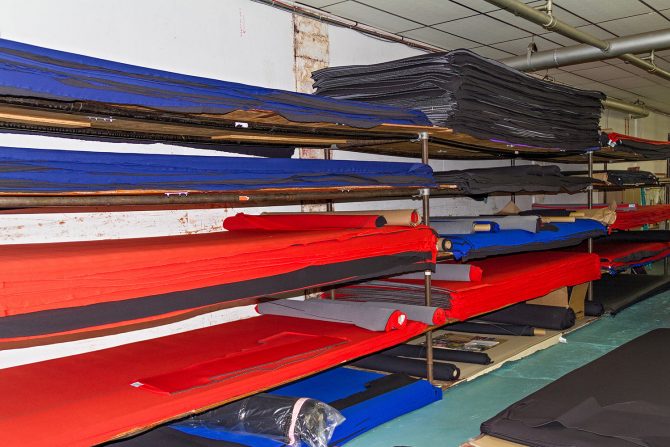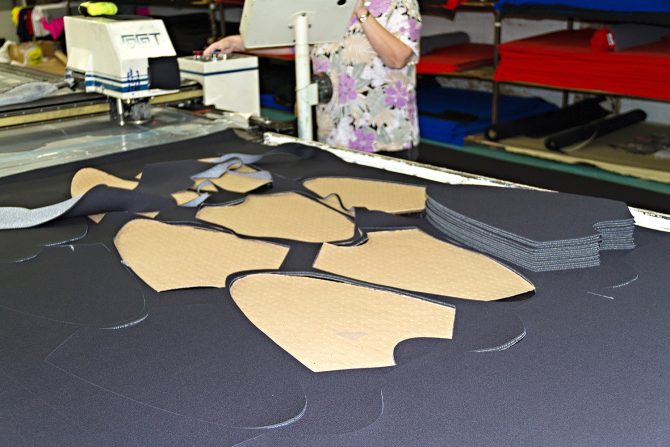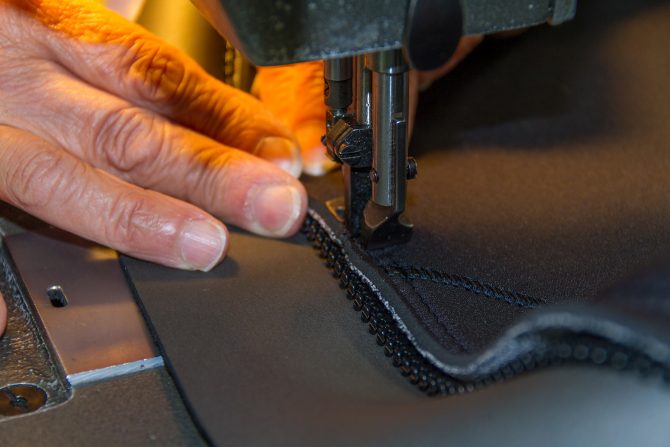
So wetsuits don’t actually grow on trees, huh? Photo: Wetsuit Wearhouse
I recently spoke with Henderson Wetsuits‘ Nick Lassor, the Director of Marketing and Product Development, to answer a commonly-asked, but little-understood question: How are wetsuits made? Here’s what Nick had to say.
First things first, tell us about yourself.
I have been working with Henderson Sport Group for 5 ½ years. My focus initially was on building the STORMR brand. I have since taken over as Director of Marketing and Product Development for all brands under HSG. I grew up and still live in Cape May County, NJ, a mile or so from the Atlantic Ocean. I’ve been surfing and using wetsuits the majority of my life. Seeing my kids grow up and use some of the products I’ve designed is truly surreal.
So, how are wetsuits made?
Wetsuits are made with neoprene, a synthetic rubber. The rubber is formed into “Buns” and sliced into sheets. The rubber sheets are then laminated to various fabrics. There are many different types of neoprene which are produced for various uses and price-specific situations. For example, surf wetsuits are used on the surface of the water and need to be lightweight and stretchy. This means that the neoprene must have enough stretch so surfers can move freely while wearing the suit. The materials laminated to the neoprene must stretch enough to be comfortable and dry quickly for multiple sessions per day. Where dive wetsuits are used under the surface of the water and must be able to hold their thickness (not significantly compress with the water pressure) over the extended life of the wetsuit. One of the most important aspects of any wetsuit is the thickness, which ranges from 1.5mm all the way to 7mm. The thicker the neoprene is, the warmer the wetsuit will be.
Once the neoprene, laminated fabrics, and thickness are chosen, the construction of the wetsuit, including patterning, seams and other features, are decided. The pattern, which includes fit, zipper placement, reinforced areas, ankle and wrist cuff closure systems, etc., are all designed with comfort and durability in mind. The most popular seam constructions are GBS and Flatlock. Glued & Blind Stitched (GBS) seams are first glued together down the raw edge of each pattern piece then are stitched using a very specific sewing machine that only stitches about half way through the neoprene and does not puncture through the whole suit. This helps create a more watertight seam. Some of our higher end wetsuits are double blind stitched (internally and externally stitched) and have an added liquid tape to the external seam which protects and fills any potential leaking points on the seams. Flatlock seams are mainly used for price point, rental and warm water wetsuits (3mm, 2mm & 1.5mm). Flatlock seams are very durable but are not watertight.

Shelves of neoprene. Photo: Wetsuit Wearhouse

Machine cutting neoprene panels. Photo: Wetsuit Wearhouse

Gluing neoprene panels. Photo: Wetsuit Wearhouse

Blind stitching a seam. Photo: Wetsuit Wearhouse

Stitching a flatlock seam. Photo: Wetsuit Wearhouse

Stitching the almighty zipper. Photo: Wetsuit Wearhouse

Ready to ship! Photo: Wetsuit Wearhouse
And that’s how you do it!
Editor’s Note: A version of this article first appeared on Wetsuit Wearhouse.

